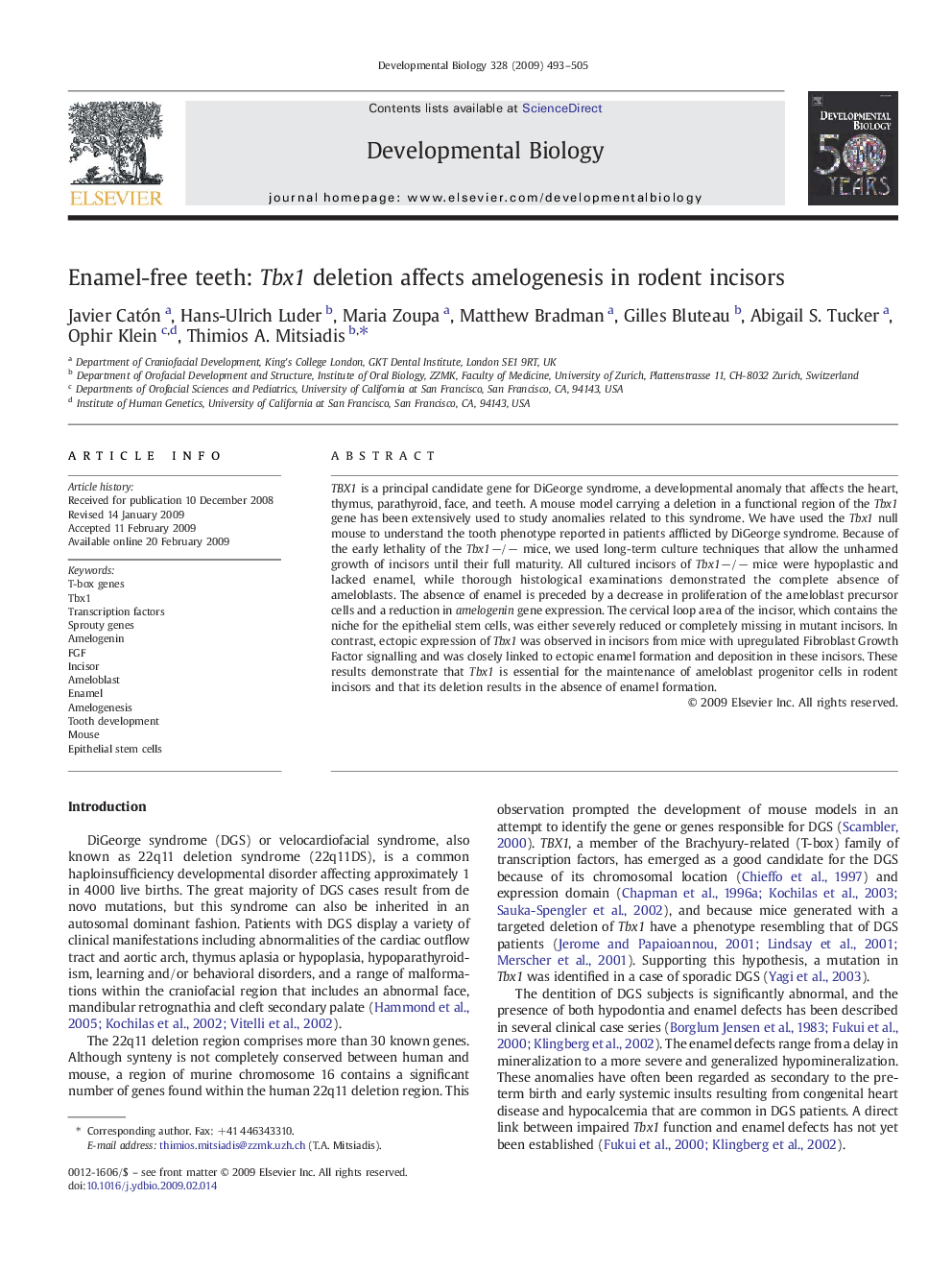| Article ID | Journal | Published Year | Pages | File Type |
|---|---|---|---|---|
| 10933361 | Developmental Biology | 2009 | 13 Pages |
Abstract
TBX1 is a principal candidate gene for DiGeorge syndrome, a developmental anomaly that affects the heart, thymus, parathyroid, face, and teeth. A mouse model carrying a deletion in a functional region of the Tbx1 gene has been extensively used to study anomalies related to this syndrome. We have used the Tbx1 null mouse to understand the tooth phenotype reported in patients afflicted by DiGeorge syndrome. Because of the early lethality of the Tbx1â/â mice, we used long-term culture techniques that allow the unharmed growth of incisors until their full maturity. All cultured incisors of Tbx1â/â mice were hypoplastic and lacked enamel, while thorough histological examinations demonstrated the complete absence of ameloblasts. The absence of enamel is preceded by a decrease in proliferation of the ameloblast precursor cells and a reduction in amelogenin gene expression. The cervical loop area of the incisor, which contains the niche for the epithelial stem cells, was either severely reduced or completely missing in mutant incisors. In contrast, ectopic expression of Tbx1 was observed in incisors from mice with upregulated Fibroblast Growth Factor signalling and was closely linked to ectopic enamel formation and deposition in these incisors. These results demonstrate that Tbx1 is essential for the maintenance of ameloblast progenitor cells in rodent incisors and that its deletion results in the absence of enamel formation.
Keywords
Related Topics
Life Sciences
Biochemistry, Genetics and Molecular Biology
Cell Biology
Authors
Javier Catón, Hans-Ulrich Luder, Maria Zoupa, Matthew Bradman, Gilles Bluteau, Abigail S. Tucker, Ophir Klein, Thimios A. Mitsiadis,
